Need to block noise from entering through your door? This guide on how to soundproof a door will help. We’ll cover practical steps like selecting the right door, sealing gaps, and enhancing mass. Achieve a quieter space with our tips!
Key Takeaways
- Soundproofing doors minimises noise pollution, improving health and well-being by enhancing sleep quality and reducing stress.
- Identifying noise sources and sealing gaps are critical steps in effective soundproofing, allowing for targeted solutions that reduce unwanted sound transmission.
- Choosing the right door type, such as solid core or solid wood doors, and applying additional soundproofing techniques like acoustic sweeps and weatherstripping significantly enhances noise isolation. Acoustic doors are specifically designed to reduce noise and can provide up to 50dB of sound reduction.
Importance of Soundproofing Doors
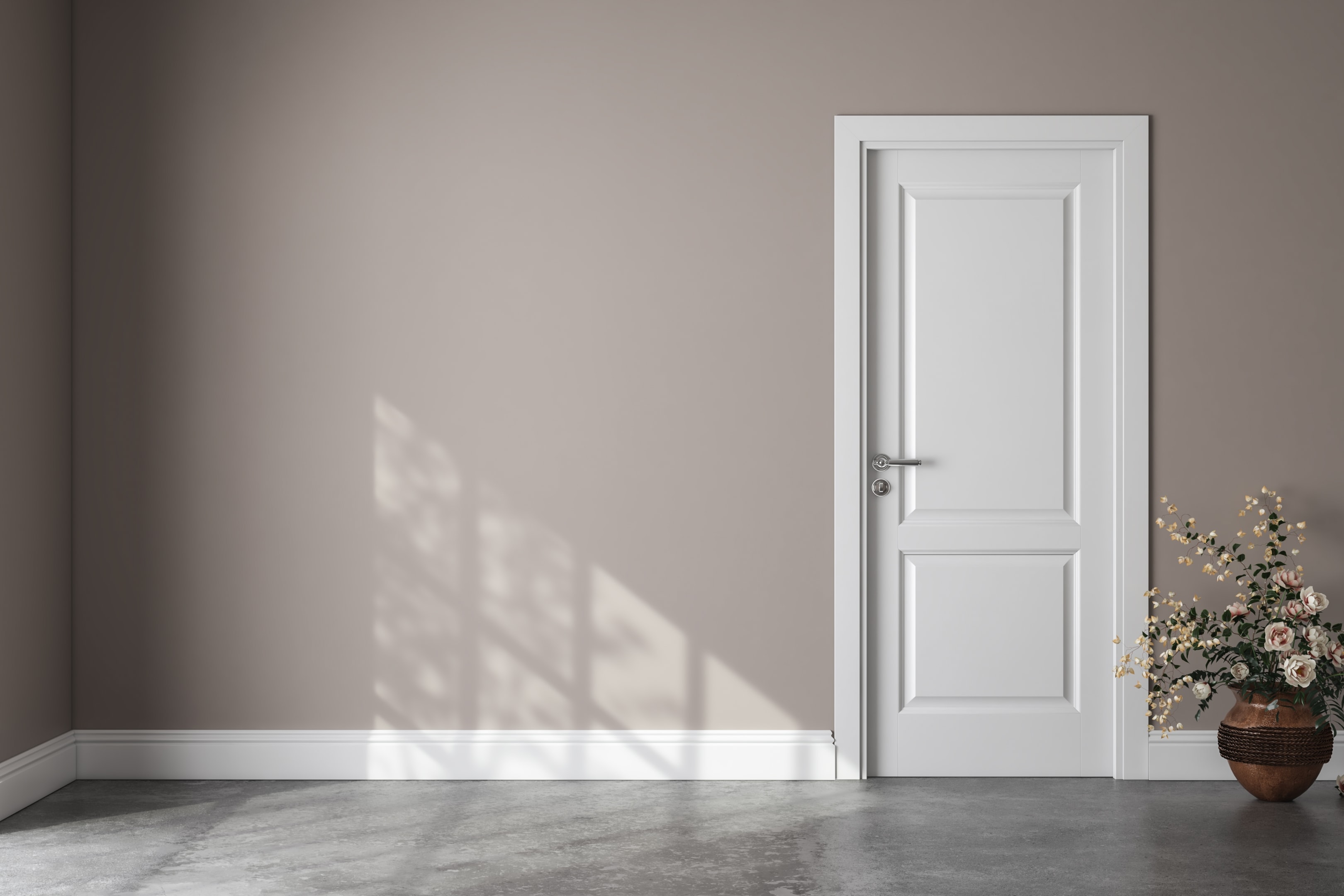
Noise pollution isn’t just an annoyance; it’s a serious issue that can impact our health and well-being. High noise exposure can lead to a range of health problems, from disturbed sleep and increased stress levels to more severe conditions like cardiovascular diseases. Noise pollution can also lead to stress, headaches, hypertension, and anxiety. According to the World Health Organisation, noise pollution contributes to the loss of over 1 million years of healthy living annually. Creating a soundproof environment can mitigate these risks, leading to improved sleep quality and overall well-being, as well as enhanced noise reduction levels.
Soundproofing doors is one of the most effective ways to combat noise pollution. Doors are often the largest gaps in a home’s structure, making them significant entry points for unwanted noise. Implementing soundproofing measures reduces noise transmission both internally and externally, creating a quieter and more peaceful living space. This not only enhances your day-to-day comfort but also improves privacy by minimising sound leakage between rooms.
Beyond health benefits, soundproofing doors can greatly enhance your quality of life. Imagine the tranquillity of a peaceful home where you can relax without the constant intrusion of loud noises. Whether you’re looking to create a serene bedroom for restful sleep, a quiet office for better productivity, or simply a more pleasant living environment, soundproofing your doors is a crucial step toward achieving superior noise reduction.
Identifying Noise Sources
Before you can effectively block noise, it’s essential to understand where it’s coming from. Noise sources can be broadly categorised into two types: airborne noise and impact noise. Airborne noise includes sounds like speech, music, and traffic that travel through the air, while impact noise is caused by physical actions such as footsteps or banging doors. Identifying which type of noise you’re dealing with, including airborne and impact noise, is the first step in choosing the right soundproofing techniques to block airborne noise.
Effectively reducing noise transmission involves:
- Identifying all potential entry points around the door, such as gaps and the door material itself.
- Understanding that indirect sound, also known as flanking noise, occurs when sound travels around obstacles, making it trickier to identify and address.
- Carefully inspect your door and its surroundings for any cracks, gaps, or weak points where sound might be leaking through to reduce noise transmission.
Identifying noise sources is easier when you understand how sound waves travel:
- Sound waves can easily pass through small openings and cracks, leading to significant noise transfer.
- Pinpointing these entry points and the type of noise allows for targeted soundproofing measures.
- Targeted soundproofing provides superior noise reduction and effectively blocks unwanted sounds.
Choosing the Right Door Type
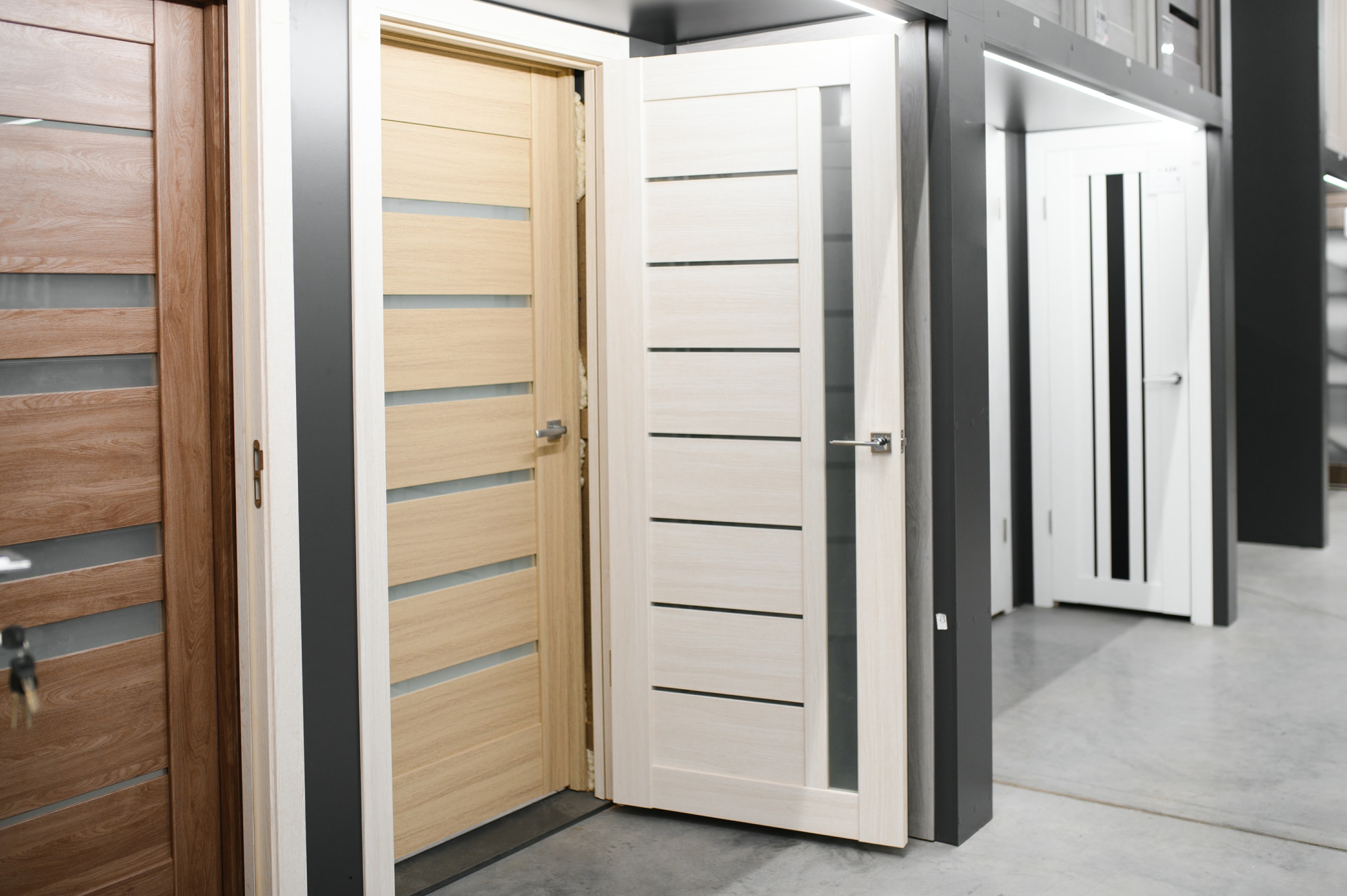
Selecting the right door is crucial for soundproofing. Not all doors are created equal when it comes to blocking noise. Solid core doors are generally recommended for soundproofing due to their dense construction, which provides a significant acoustic barrier compared to hollow core doors. Solid doors with flat surfaces can also effectively block noise, making them another viable option.
When selecting a door for soundproofing, consider the specific needs of your space:
- Professional acoustic doors are designed with sound insulation in mind and can be an excellent choice for areas requiring superior noise reduction.
- The right door frame can further enhance the door’s soundproofing capabilities.
- Door gaskets also contribute to improving soundproofing.
Different types of doors require different soundproofing approaches. Next, we’ll explore the specifics of solid-core versus hollow-core doors and the benefits of solid wood doors. This will help you make an informed decision on the best door type for your soundproofing needs.
Solid Core vs Hollow Core Doors
Solid core doors are highly effective at blocking noise due to their dense construction, which provides a substantial acoustic barrier. These doors are filled with a solid material, often wood or composite, that significantly reduces sound transmission.
On the other hand, a hollow door, which is common in most interior doors, has a lightweight construction that allows sound to pass through more easily. While hollow doors can be improved with additional soundproofing materials like mass-loaded vinyl, they still fall short of the noise-blocking capabilities of solid-core doors.
For superior noise reduction, invest in a solid-core door or one designed specifically for a soundproof door.
Solid Wood Doors
Solid wood doors are another excellent option for soundproofing, thanks to their high density and mass. The inherent properties of solid wood make these doors highly effective at blocking noise and providing superior sound insulation. Choosing a solid wood door significantly reduces noise transmission, creating a quieter indoor environment.
Additionally, solid wood doors not only enhance soundproofing but also add a touch of elegance and durability to your home. Whether you’re looking to soundproof an interior door or an exterior door, solid wood doors offer a blend of functionality and aesthetic appeal that makes them a popular choice for many homeowners.
Sealing Gaps Around the Door
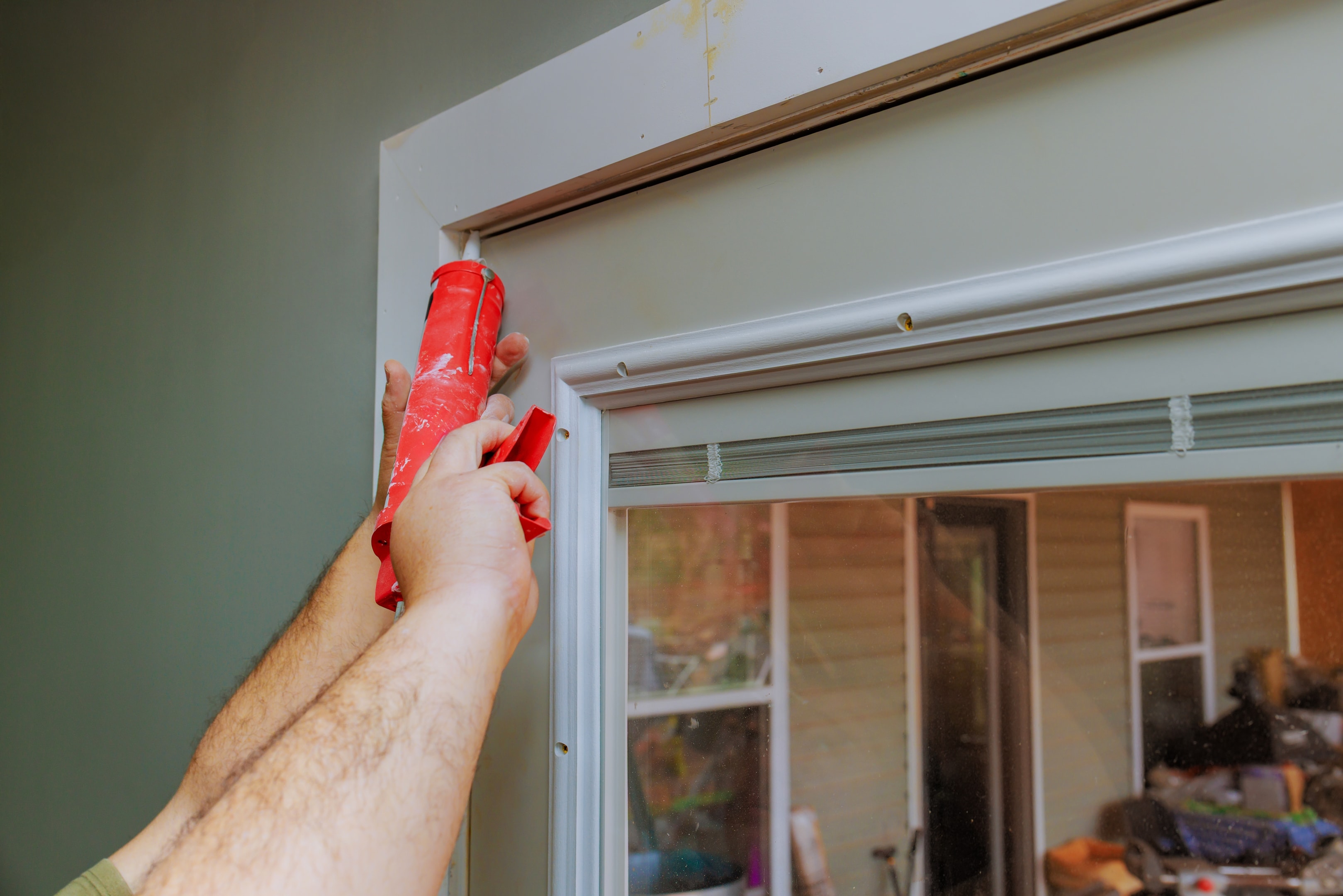
Even the best soundproof doors can fall short if there are gaps around the door frame. Sealing these gaps is crucial to preventing sound leakage and ensuring effective noise reduction. Gaps around the door can significantly allow sound to travel through, undermining your soundproofing efforts. Comprehensive soundproofing requires closing gaps using methods like acoustic door sweeps, weatherstripping, and door gaskets. Basic weatherstripping can degrade over time, so higher-quality options are preferable for long-term soundproofing.
One of the main methods to soundproof a door involves sealing all gaps to prevent noise infiltration. Various types of door seals exist, ranging from budget-friendly draught excluders to premium acoustic seals. Sealing between the door and frame is particularly important for sound insulation, as it minimises sound leakage through the air gap around the door.
Addressing the bottom gap in door soundproofing is also critical. Acoustic door sweeps, weatherstripping, and door gaskets can all help create a tight seal around the door, effectively blocking airborne noise and reducing noise transmission. Next, we’ll explore each of these methods in detail.
Installing Acoustic Door Sweeps
Acoustic door sweeps are designed to close the gap at the bottom of the door, preventing sound leakage. These sweeps are typically made from specially designed acoustic materials that create a barrier against noise. Installing an acoustic door sweep requires a drill and screws, along with the sweep itself.
Ensure the sweep covers the entire bottom gap with no small gaps left uncovered for effective installation. An automatic door sweep can be particularly useful as it adjusts to form a tight seal with the floor when the door is closed, enhancing sound insulation.
Using Weatherstripping
Weatherstripping is a cost-effective method to seal cracks around a door frame. High-quality weatherstripping materials enhance durability and ensure long-term soundproofing effectiveness. Installing soundproof weatherstripping creates an airtight seal to block sound and air leaks, significantly improving sound insulation.
Common materials for weatherstripping include rubber and neoprene, both of which are effective in creating a tight seal around the door. Additionally, using caulk to seal cracks around the door can further prevent noise leakage.
An automatic door bottom ensures a proper seal at the bottom of the door when closed.
Adding Door Gaskets
Door gaskets form a complete seal around the door when it is closed, significantly improving sound insulation. These gaskets are typically made from materials like silicone and neoprene, which are effective at blocking noise and creating a tight seal. Adjustable gaskets can accommodate the natural movements of the door over time, ensuring long-term soundproofing effectiveness.
Using door gaskets in conjunction with other sealing methods, such as acoustic door sweeps and weatherstripping, provides a comprehensive approach to soundproofing doors. This multi-layered strategy ensures that all gaps are sealed, effectively blocking airborne noise and reducing noise transmission.
Enhancing Door Mass
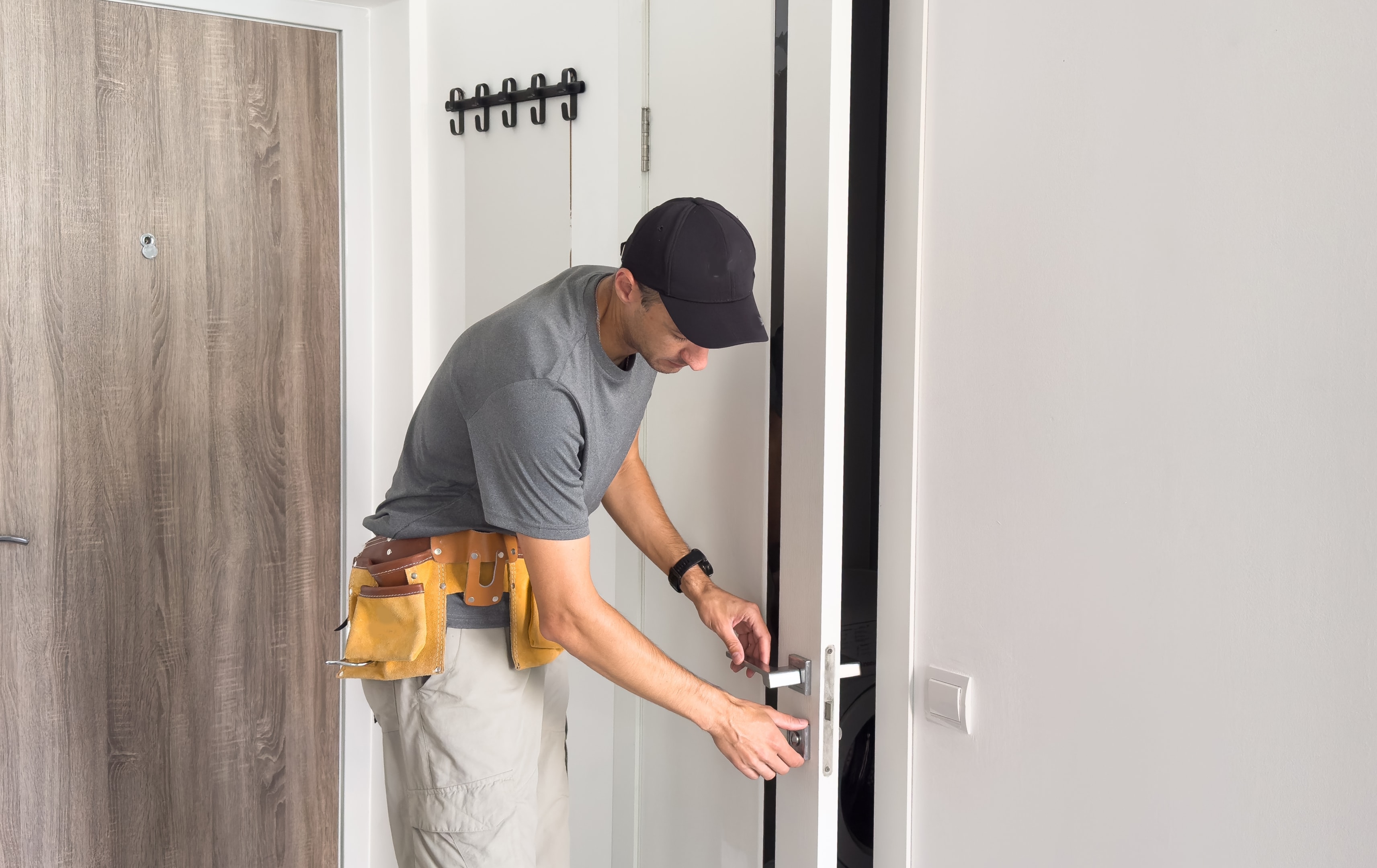
Enhancing the mass of a door is another effective soundproofing technique. Key points include:
- The heavier and denser a door is, the better it can block sound.
- Selecting doors made from denser materials, such as solid wood or composite, enhances their soundproofing capabilities.
- Increasing the weight of a door can significantly improve its ability to block sound, providing a more peaceful and quieter environment. Mass-loaded vinyl is an effective soundproofing material that can be attached to doors to increase their density.
- The heavier and denser a door is, the better it can block sound.
- Selecting doors made from denser materials, such as solid wood or composite, enhances their soundproofing capabilities.
- Increasing the weight of a door can significantly improve its ability to block sound, providing a more peaceful and quieter environment.
Effective soundproofing involves both increasing the door’s mass and eliminating air gaps to effectively soundproof the space. Combining these strategies achieves superior noise reduction and sound reduction, creating a quieter living space with improved sound quality.
Next, we’ll explore how soundproof blankets can enhance door mass and absorb sound.
Using Soundproof Blankets
Soundproof blankets are designed to absorb sound and enhance the mass of a door, providing effective noise reduction. A higher Noise Reduction Coefficient (NRC) indicates better noise absorption, making these blankets a valuable addition to your soundproofing efforts. Common materials used in soundproof blankets include fibreglass, cotton, and polyester, all of which are effective at blocking noise.
Installing soundproof blankets is relatively simple. You can drill grommets and hang the blanket over the door, or use suction hooks on the back of the door. While soundproof blankets are not a permanent solution, they can provide a temporary and cost-effective way to reduce noise and improve sound insulation.
Additional Soundproofing Techniques
Beyond enhancing door mass and sealing gaps, there are additional techniques that can further improve soundproofing. These methods can be particularly useful in situations where extensive renovations are impractical or too costly. Proper soundproofing can also enhance property value, making spaces more appealing to potential buyers or renters.
Next, we’ll explore the use of acoustic panels, acoustic glazing, and automatic door bottoms as effective solutions for reducing noise transmission and improving sound insulation.
Acoustic Panels
Acoustic panels are designed to reduce the amplitude of sound waves, effectively absorbing sound and minimising noise transfer. These soundproofing panels are commonly made from sound-absorbing materials like foam and solid wood, which are effective at blocking noise. Installing acoustic expanding foams and acoustic curtains is straightforward; you can nail them to the door or use adhesive strips for a more temporary solution.
Using a high-quality acoustical sound sealant, such as the OSI® Pro-Series SC-175 Acoustical Sound Sealant or an acoustic caulk, can further inhibit sound wave transmission. This sealant bonds well to metal, wood, and drywall, providing a comprehensive approach to soundproofing.
Automatic Door Bottoms
Automatic door bottoms are an excellent solution for sealing gaps under doors. They are designed to automatically adjust and close gaps when the door shuts, significantly improving sound isolation. This ensures a tight seal is formed every time the door is closed, preventing any sound from leaking through the bottom gap.
Installing an automatic door bottom is a straightforward process. These devices are typically mounted on the bottom of the door and can be easily adjusted to ensure a perfect seal with the floor. This not only enhances sound insulation but also adds a layer of convenience and efficiency to your soundproofing efforts.
Special Considerations for Different Door Types
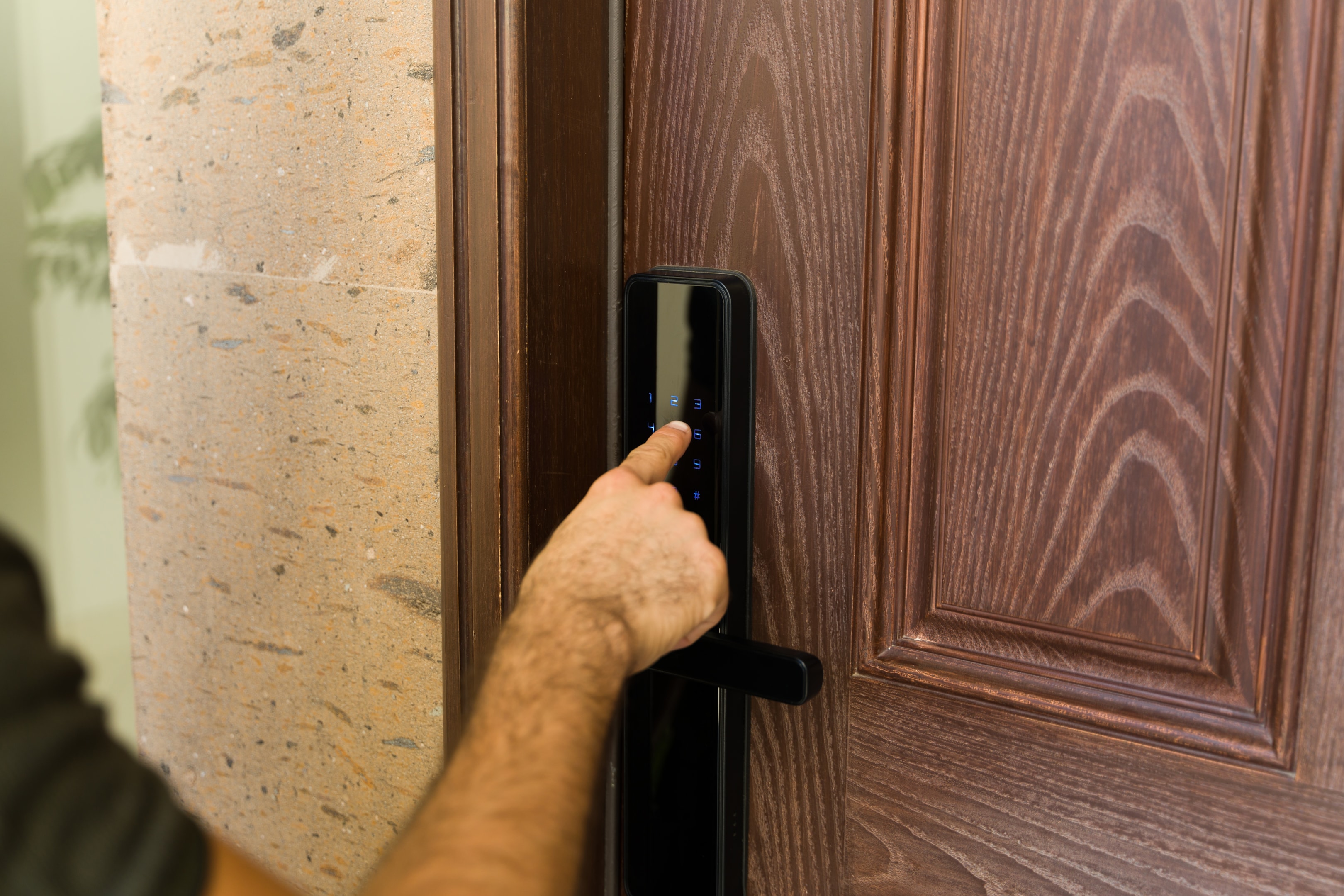
Different types of doors require specific soundproofing methods. For instance, the approach to soundproofing an exterior door will differ significantly from that of an interior bedroom door. Understanding these unique challenges and solutions is key to achieving effective noise reduction across various door types.
For professional acoustic doors, cam hinges and concealed hinges are commonly used due to their ability to lift the door upon opening and drop it into a tight seal when closed. This ensures a consistent and effective seal, minimising sound leakage and enhancing overall sound insulation.
Next, we will delve into the specifics of soundproofing exterior doors, bedroom doors, and metal doors, providing tailored solutions for each type.
Soundproofing Exterior Doors
Soundproofing exterior doors is crucial for blocking external noise and maintaining a peaceful indoor environment. The first step is to select a door with high sound-blocking capability, such as a solid core door. These doors are made from dense materials that effectively block sound, making them ideal for exterior applications.
Ensuring that the exterior door fits snugly and is properly sealed is essential. Gaps or cracks around the door can significantly allow noise to enter, undermining your soundproofing efforts.
Combine a solid core door with effective gap sealing methods, such as weatherstripping and door gaskets, for comprehensive soundproofing of exterior doors.
Soundproofing Bedroom Doors
Bedroom doors are often the most problematic internal doors when it comes to noise transmission. Effectively soundproofing a bedroom door involves replacing hollow-core doors with solid wood doors. Solid wood doors provide better sound insulation due to their high density and mass, significantly reducing noise transmission.
In addition to upgrading the door itself, using rubber weatherstripping, installing acoustic door sweeps, and applying acoustic expanding foam around the door frame can further enhance soundproofing. These combined measures can reduce noise by up to 50dB, significantly improving sleep quality and creating a more peaceful bedroom environment. Noise levels in a bedroom should ideally not exceed 30dB for quality sleep.
Soundproofing Metal Doors
Soundproofing metal doors presents unique challenges due to the material’s properties. Metal doors are naturally less sound-absorptive and more difficult to modify due to the hardness of the material. However, effective solutions do exist.
Applying soundproofing materials like mass-loaded vinyl or acoustic panels to the door’s surface is one approach. Additionally, sealing gaps around the door with high-quality door gaskets and weatherstripping is crucial to prevent sound leakage. Using the best soundproofing materials can further enhance the effectiveness of these methods.
These measures, combined with the inherent strength and durability of metal doors, can achieve superior noise reduction and create a quieter environment.
Summary
Soundproofing doors is a multi-faceted process that involves choosing the right door type, sealing gaps, enhancing door mass, and employing additional soundproofing techniques. Each step plays a crucial role in reducing noise transmission and creating a quieter living environment. From solid core and solid wood doors to acoustic door sweeps and weatherstripping, the right combination of methods can make a significant difference in blocking unwanted noise and improving your home’s sound insulation.
By understanding the unique requirements of different door types and applying the appropriate soundproofing measures, you can achieve superior noise reduction and enjoy a more peaceful, comfortable space. Whether it’s an exterior door, a bedroom door, or a metal door, the right soundproofing techniques can transform your home into a haven of tranquillity. Take the first step towards silencing the noise and enhancing your quality of life today.
Frequently Asked Questions
What is the best type of door for soundproofing?
Solid core doors are the best choice for soundproofing because their dense construction effectively reduces sound transmission more than hollow core doors.
How can I seal gaps around my door to prevent noise leakage?
To effectively prevent noise leakage around your door, install acoustic door sweeps, apply weatherstripping, and add door gaskets to create a tight seal. These solutions effectively block airborne noise and improve sound insulation.
Are soundproof blankets effective for soundproofing doors?
Soundproof blankets are indeed effective for enhancing the sound insulation of doors by adding mass and absorbing sound, making them a cost-effective and temporary solution for noise reduction.
How do automatic door bottoms improve soundproofing?
Automatic door bottoms enhance soundproofing by sealing gaps under doors, providing a tight barrier that minimises noise transmission when the door is closed. This effective closing mechanism significantly improves sound isolation.
What are the challenges of soundproofing metal doors?
Soundproofing metal doors is challenging due to their low sound absorption and difficulty in modification. However, using soundproofing materials and sealing gaps can significantly reduce noise transmission.

Add comment